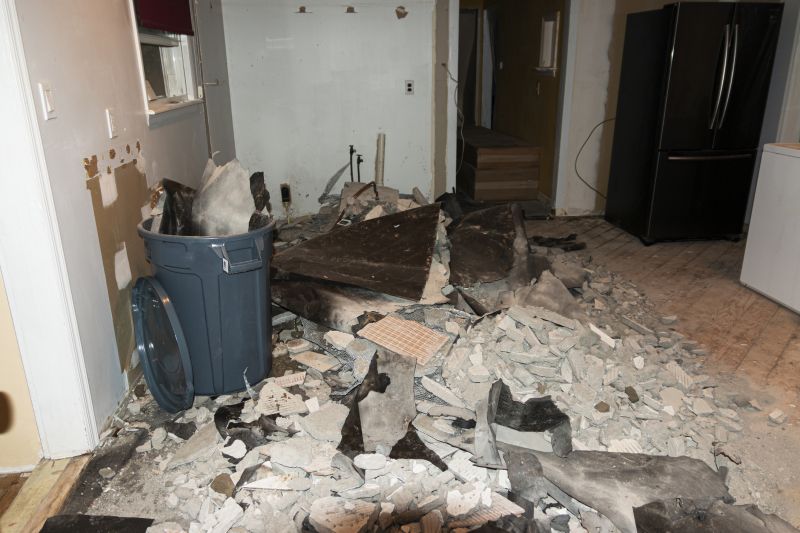Favorite Fire Restoration Tools For Effective Damage Control
Browse trusted products that help you manage fire damage cleanup, odor removal, and structural repairs with ease.
 Fire restoration is a critical process that involves addressing the aftermath of fire damage in residential and commercial properties. It requires specialized products designed to clean, repair, and restore structures affected by smoke, soot, heat, and water used during firefighting efforts. These products help mitigate further damage, improve safety, and restore the property's integrity. Proper selection of fire restoration supplies can make the process more efficient and effective.
Fire restoration is a critical process that involves addressing the aftermath of fire damage in residential and commercial properties. It requires specialized products designed to clean, repair, and restore structures affected by smoke, soot, heat, and water used during firefighting efforts. These products help mitigate further damage, improve safety, and restore the property's integrity. Proper selection of fire restoration supplies can make the process more efficient and effective.
Top Overall Option
Multi-Purpose Fire Damage Restoration Kit
A comprehensive kit that includes a selection of cleaning agents, sealants, and moisture control tools designed for various stages of fire restoration. It offers versatility and convenience for both professionals and DIY restorers, helping to address smoke, soot, water damage, and structural repairs efficiently.
Types of Products For Fire Restorations
Soot and Smoke Removers
Specialized cleaning agents formulated to break down soot and eliminate smoke odors from surfaces and materials.
Odor Neutralizers
Products designed to neutralize and eliminate persistent smoke smells from indoor environments.
Fire-Resistant Drywall
Special drywall panels that provide enhanced fire resistance for rebuilding damaged walls.
Heat-Resistant Sealants
Sealants capable of withstanding high temperatures to prevent further heat damage and contain fire spread.
Water Extraction Equipment
Tools such as industrial water vacuums and pumps used to remove residual water from fire suppression efforts.
Dehumidifiers
Devices that reduce moisture levels to prevent mold growth and secondary water damage.
Structural Reinforcement Materials
Reinforcement supplies like fire-resistant insulation and framing components for rebuilding efforts.
Fire-Resistant Coatings
Protective coatings applied to surfaces to improve fire resistance during rebuilding.
Personal Protective Equipment
Safety gear such as respirators, gloves, and protective suits for workers handling fire restoration tasks.
Smoke Sponges and Cleaning Cloths
Absorbent tools designed to lift smoke residues from surfaces without causing additional damage.
Electrostatic Air Purifiers
Air purification devices that remove airborne soot particles and odors during cleanup.
Fire-Resistant Flooring
Flooring options that provide added resistance to fire and heat during reconstruction.
Popular Choices
Widely used products for removing soot and smoke residues from various surfaces.
Effective sprays that help neutralize lingering smoke odors in indoor spaces.
Powerful water removal tools favored for their efficiency in extracting water from fire suppression.
Popular for controlling moisture levels and preventing secondary damage post-fire.
Commonly chosen for rebuilding walls in fire-damaged areas to enhance safety.
Used to absorb and neutralize smoke odors in enclosed spaces during restoration.
Essential safety gear for workers handling smoke and soot cleanup tasks.
Applied to vulnerable areas to prevent fire spread and reinforce structures.
Popular for improving indoor air quality during the restoration process.
Applied to surfaces to add an extra layer of fire resistance during rebuilding.
In fire restoration, cleaning agents such as soot removers and odor neutralizers are essential for eliminating smoke residues and unpleasant smells. Structural repair materials like heat-resistant sealants and fire-resistant drywall are used to rebuild and reinforce damaged areas. Additionally, moisture control tools such as dehumidifiers and water extraction equipment are vital for removing residual water and preventing mold growth.
Restoration professionals often rely on a combination of these products to ensure a comprehensive approach to recovery. The right tools and materials can help reduce turnaround times and improve the quality of restoration work. When selecting products, it is important to consider their compatibility with existing materials, safety standards, and ease of use. Proper training and knowledge about each product's application can significantly impact the success of a fire restoration project.
Overall, investing in high-quality, reliable fire restoration products can assist property owners and professionals in managing the complex challenges posed by fire damage. While the specific needs may vary based on the extent of the damage, having a well-rounded selection of supplies ensures preparedness for different scenarios. Whether addressing smoke odor, structural integrity, or water damage, the right products are key to achieving thorough and effective restoration outcomes.
Key Buying Considerations
- Compatibility with existing building materials and surfaces.
- Effectiveness against soot and smoke residues.
- Ability to neutralize persistent odors.
- Fire resistance ratings and safety standards compliance.
- Ease of application and user friendliness.
- Durability and longevity of the product after application.
- Safety features, including non-toxicity and proper ventilation requirements.
- Size and coverage area to match project scope.
- Availability of replacement parts or refills.
- Compatibility with other restoration tools and equipment.
- Cost-effectiveness and overall value for the scope of work.
- Brand reputation and customer reviews.
- Training or instructions needed for proper use.
- Environmental conditions in the property, such as moisture levels.
- Local regulations or codes related to fire safety and building materials.
